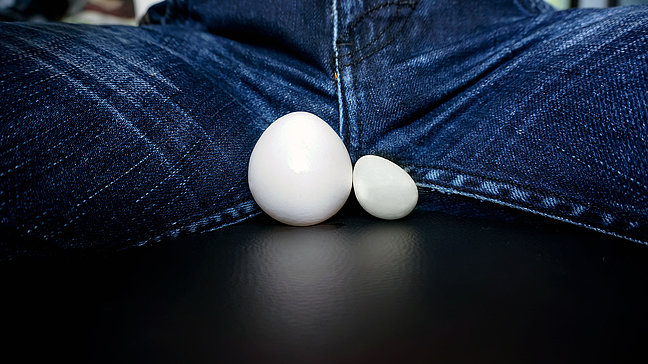
Sliding skins
Causes of retractile testicles
The main cause of the retractile testis is a limited elasticity of the spermatic cord or an increased activity of the cremaster muscle, which pulls the testis into the groin. This anomaly can be congenital or develop during early childhood.
Symptoms of retractile testicle
- The testicle can be pulled into the scrotum but slides back into the groin
- The testicle does not remain permanently in the scrotum
- Usually no pain or discomfort in everyday life
Diagnosis of sliding testicles
The diagnosis of a retractile testicle is usually made through a physical examination. The doctor will check whether the testicle can be pulled into the scrotum and how long it remains there. Imaging techniques such as ultrasound can be used for further examination to assess the condition of the testicle and its surrounding structures.
Treatment options for retractile testis
- Observation: In some cases, the undescended testicle may normalize on its own with the child's growth. Regular check-ups are necessary to monitor the development.
- Surgical: If the testicle does not remain permanently in the scrotum, surgery (orchidopexy) may be required to fix the testicle in the scrotum and prevent complications such as infertility or testicular cancer in adulthood.
Preventive measures for retractile testis
Since the retractile testicle is usually congenital, there are no specific preventive measures. However, regular check-ups are important to detect the condition early and prevent possible complications.
Testicle Position Protocol
If not already suggested by your urologist as a first measure for your child, or if you notice that at least one of the testicles does not descend into the scrotum, download the testicle position protocol here and record the status of the testicles over a period of 4 weeks. Please bring the completed protocol to the following examination.
Common Patient Questions About Retractile Testicle
An untreated undescended testicle can increase the risk of infertility and testicular cancer later in life. Additionally, it can lead to discomfort or pain due to repeated mispositioning.
There are no specific exercises that can permanently affect a retractile testicle. In some cases, manual techniques may help with temporary correction, but a retractile testicle usually requires medical treatment.
In children, a retractile testicle is often diagnosed early, and there is a greater chance that the testicle will position itself correctly over time. In adults, a retractile testicle can lead to more severe discomfort and increase the risk of long-term consequences, which is why surgical treatment is often recommended here.
In young children, a retractile testicle can sometimes move into the correct position over time. However, if this does not happen, medical treatment may be necessary to permanently relocate the testicle into the scrotum.
![[Translate to English:]](/fileadmin/_processed_/1/d/csm_UZ-Logo-2024-breit-aK-1500px-white-red_4b49b8d28c.png)



